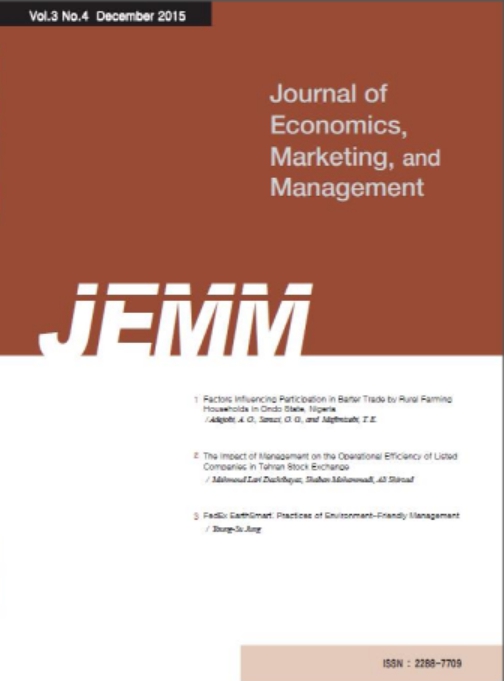- 권한신청
- E-ISSN2288-7709
- KCI
10권 3호
초록
Abstract
Purpose: This study aims to examine the effect of SMEs' R&D competence on management performance. Research design, data, and methodology: The empirical data of this study are derived from 2,375 SMEs that participated in the material, parts, and equipment research and development support project conducted from 2014 to 2018. Among them, 2,230 data were analyzed by classifying them into high-tech and low-tech fields. SPSS 24.0 was used for statistical analysis and correlation analysis and T-TEST were applied. Results: It was analyzed that the level of R&D organization, research personnel, and the number of patent registrations all affected operating profit and sales. In particular, it has been proven that research personnel have a greater impact on management performance among the level of R&D organization, research personnel, and the number of patent registrations. In addition, there was a difference between high-tech and low-tech industries in the impact on operating profit and sales, which are indicators of management performance. Conclusions: This study suggests that R&D competence are strengthened to advance the material, parts, and equipment industries and to promote future growth, while differentiated support is needed according to each company's R&D competence and technology level.
초록
Abstract
Purpose: Previous studies have shown that consumers feel more happiness when they have experiential purchases than material purchases. This experiential advantage has aroused great concern of researchers in the field of social and consumer psychology. Focusing on this issue, the paper aims to tease out the relevant academic work and to further provide with some significant implications. Research design, data and methodology: The paper has divided the review into the following parts. Firstly, the connotation of experiential purchase and material purchase has been simply defined; Secondly, based on the logical framework of pre-factor variables, intermediary variables and regulating boundary conditions, this paper has collated the causal chain of the influence of purchases types on happiness; Finally, this paper has reviewed and summarized the shortcomings of existing studies, and have pointed out specific objectives of future research. Results: From the perspective of time utility and space form, this paper has expounded the substantive differences between the two types of purchase, which lays a foundation for the explanation of the follow-up mechanism. Moreover, the paper has mainly interpreted the intermediary mechanism from two aspects, namely, individual elements of consumers and social elements of consumption situations. Conclusions: This study expands the scope of previous happiness research and strengthens the negative events adaptation research.
초록
Abstract
Purpose: The purpose of this study is to compare and analyze the enterprise's score index calculated from atypical data and corrected data. Research design, data, and methodology: In this study, news articles which are non-financial information but qualitative data were collected from 2,432 SMEs that has been extracted "square proportional stratification" out of 18,910 enterprises with fixed data and compared/analyzed each enterprise's score index through text mining analysis methodology. Result: The analysis showed that qualitative data can be quantitatively evaluated by region, industry and period by collecting news from SMEs, and that there are concerns that it could be an element of alternative credit evaluation. Conclusion: News data cannot be collected even if one of the small businesses is self-employed or small businesses has little or no news coverage. Data normalization or standardization should be considered to overcome the difference in scores due to the amount of reference. Furthermore, since keyword sentiment analysis may have different results depending on the researcher's point of view, it is also necessary to consider deep learning sentiment analysis, which is conducted by sentence.














